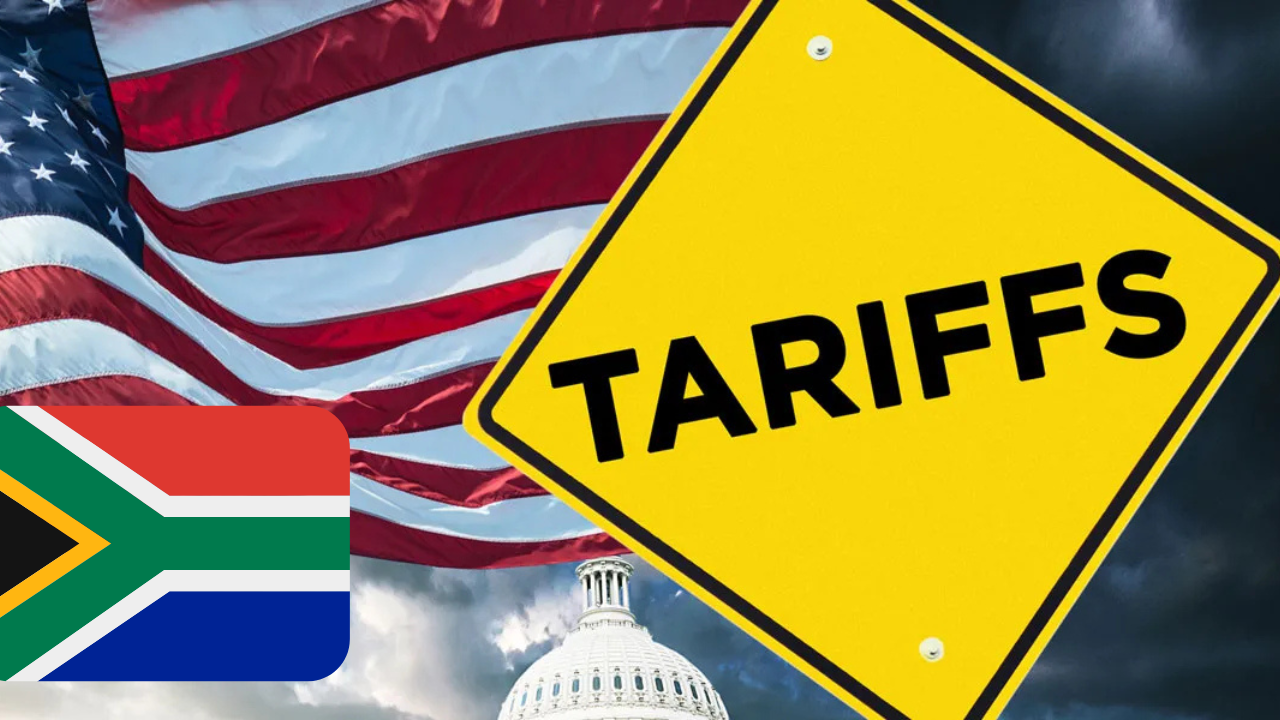
South Africa is facing mounting economic risks as the United States prepares to implement a sweeping 30% tariff on key South African exports starting in August 2025. Economists and industry leaders warn that the new trade duties, targeting sectors like steel, aluminum, automotive parts, and agricultural goods, could have devastating effects on local jobs, foreign investment, and the broader economy if not rapidly addressed through diplomatic or policy mitigation.
With the U.S. representing one of South Africa’s largest export markets, the potential impact of these tariffs extends across manufacturing, mining, farming, and logistics—raising fears of retrenchments, plant closures, and a deepening unemployment crisis.
What Is the U.S. 30% Tariff and Why Is It Being Imposed?
The 30% tariff, announced as part of broader U.S. trade policy shifts, is aimed at addressing concerns over market imbalances, import surges, and alleged unfair trading practices. For South Africa, affected product categories include:
- Steel and steel products
- Aluminum goods
- Auto components and parts
- Citrus, wine, and agricultural exports
- Selected machinery and manufactured goods
The move follows months of trade tension and failed negotiations, with Washington citing the need to protect U.S. industries and jobs.
How Will the Tariff Affect South Africa’s Economy?
Economists warn the impact could be severe and immediate:
- Loss of competitiveness: South African products will become significantly more expensive in the U.S. market, leading to declining export volumes.
- Job losses: Industries reliant on U.S. sales may begin retrenching workers, with estimates of tens of thousands of jobs at risk.
- Reduced foreign exchange earnings: Lower exports will diminish dollar inflows, putting pressure on the rand and the national balance of payments.
- Disrupted supply chains: Companies may halt production, affecting local suppliers and downstream sectors.
- Falling investor confidence: Foreign and local investment could drop amid increased uncertainty.
Sectors Most at Risk from U.S. Tariffs
| Sector | Share of U.S. Exports | Estimated Jobs at Risk | Key Products Impacted | Notes |
|---|---|---|---|---|
| Steel & Aluminum | 35% | 12,000+ | Steel coil, sheet, bars | Major steel plants in Gauteng, KZN |
| Automotive | 22% | 8,000+ | Auto parts, engines, tires | Export-driven component plants |
| Agriculture | 18% | 15,000+ | Citrus, wine, nuts, maize | Mostly Western Cape, Limpopo |
| Mining & Minerals | 11% | 4,000+ | Ferrochrome, platinum | Export-focused miners |
| Manufacturing | 14% | 6,000+ | Machinery, appliances | Local SME exporters |
Total estimated direct and indirect job risk: 45,000–60,000 workers
Timeline of Tariff Implementation and Response
| Date | Event | Impact/Action |
|---|---|---|
| 15 July 2025 | U.S. confirms 30% tariff to start in August | SA govt, business condemn |
| 1 August 2025 | Tariff comes into force | Exports face new duties |
| 5 August 2025 | Emergency cabinet meeting in Pretoria | Mitigation plan discussed |
| 10 August 2025 | Trade mission sent to Washington | Seeking negotiations |
| 15 August 2025 | Industry-wide consultations | Job protection proposals |
| 25 August 2025 | Projected first major retrenchment notices | Companies cut production |
What Mitigation Measures Are Possible?
- Urgent diplomatic engagement to seek tariff exemptions or temporary relief for key products.
- Negotiating side deals or quotas for certain sectors (especially auto and agriculture).
- Accelerating diversification into new export markets in Africa, Asia, and the EU.
- Domestic support measures like wage subsidies, tax breaks, or short-time work schemes for affected industries.
- Promoting value-addition and local beneficiation to offset declining raw exports.
How Could This Affect the Ordinary South African?
- Job losses in factories, farms, and mines, with knock-on effects in retail and local services.
- Possible wage freezes or pay cuts in export-dependent sectors.
- Slower economic growth, higher unemployment, and more pressure on government social support.
- Increased prices for goods if local producers pass on higher costs to consumers.
- Potential weakening of the rand, raising import costs across the economy.
Comparison: U.S. Tariffs vs. Other Trade Barriers
| Trade Barrier Type | Typical Rate | Speed of Impact | Reversal Difficulty | South Africa’s Exposure |
|---|---|---|---|---|
| U.S. 2025 Tariff | 30% | Immediate | High | Very high (key sectors) |
| EU Anti-Dumping | 8–20% | Gradual | Medium | Moderate |
| Non-Tariff Barriers | N/A | Variable | High | Moderate |
| Import Quotas | Varies | Fast | Medium | Low (for most sectors) |
What Should Affected Businesses and Workers Do?
- Stay in close contact with industry associations and SACTWU, AgriSA, and NUMSA for updates and support.
- Prepare documentation for UIF and government support if facing retrenchment.
- Explore opportunities in alternative export markets and value-added manufacturing.
- Use government relief hotlines and SEDA for small business advice and access to finance.
The imposition of a 30% U.S. tariff on South African exports poses a major threat to jobs, industry, and economic stability from August 2025. Rapid government, business, and worker action is needed to negotiate relief, adapt to new conditions, and protect livelihoods. Without fast, coordinated mitigation, tens of thousands of jobs and billions in trade are at risk.
Frequently Asked Questions (FAQs)
Q1: Which SA products are most affected by the new U.S. tariffs?
A: Steel, aluminum, auto parts, citrus, wine, and select manufactured goods are the primary targets.
Q2: When do the tariffs take effect?
A: The 30% tariff is set to begin on 1 August 2025.
Q3: How many jobs could be lost if the tariff is not stopped?
A: Estimates range from 45,000 to 60,000 direct and indirect jobs across major export sectors.
Q4: What is government doing to fight the tariffs?
A: Emergency negotiations, trade missions to Washington, and local support measures are underway.
Q5: Will prices rise for South African consumers?
A: Possibly, especially for products tied to affected export sectors or if the rand weakens further.
Q6: Are other export markets being considered?
A: Yes, government and industry are seeking to expand exports to the EU, Asia, and the rest of Africa.
Q7: Can the tariffs be reversed quickly?
A: It will depend on negotiations and U.S. policy, but reversal may take months even with progress.
Q8: Where can workers get help if retrenched?
A: Contact UIF, SEDA, and your industry union or association for support, benefits, and retraining options.






